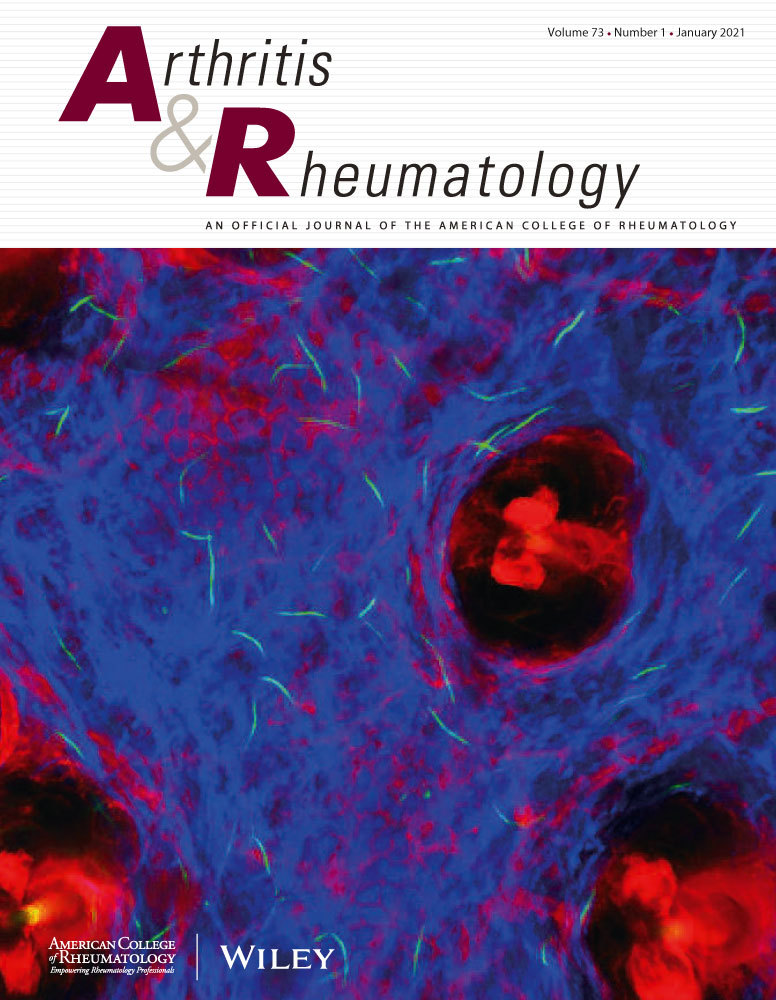Longitudinal Changes in Serum Urate Levels from Pre-menopause through Post-menopause: Interrupted Time-Series Analyses.
IF 10.9
1区 医学
Q1 RHEUMATOLOGY
引用次数: 0
Abstract
OBJECTIVES Hyperuricemia (HU) and gout are common in post-menopausal women. We aimed to identify the longitudinal changes in serum urate (SU) levels during and after the menopausal transition and its interaction with coexisting SU-modifying conditions. METHODS This longitudinal study included Japanese women who underwent annual medical examinations from April 2004 to September 2024 and had at least one visit before and after self-reported menopause. Menopausal transition stages were categorized into pre-menopause, peri-menopause (5 years prior to and up to the menopause), and post-menopause. Longitudinal changes in SU and HU (SU ≥6.8 mg/dL or taking medications for gout/HU) were examined by interrupted time-series analyses and evaluated across stratified subgroups. RESULTS We analyzed 8,169 eligible participants with 93,511 visits over a median follow-up of 13.8 years. SU levels gradually increased during pre-menopause, rose sharply over peri-menopause, and stabilized in post-menopause. Compared to pre-menopause, the mean SU level was 0.41 mg/dL (95% CI: 0.38, 0.43) higher in post-menopause. HU prevalence increased from <1.0% during pre-menopause to 4-5% during post-menopause. Compared to pre-menopause, the associations of a low estimated glomerular filtration rate (<60 mL/min/1.73 m2) and a high body mass index (≥25 kg/m2) with HU were greater in post-menopause; HU was observed in approximately 18% of overweight or obese women at menopause. CONCLUSIONS SU levels rapidly increase during peri-menopause and are already elevated by the time of menopause. Maintaining a normal body weight and preserving kidney function prior to menopause may decrease postmenopausal HU and potentially prevent subsequent gout in women.绝经前至绝经后血清尿酸水平的纵向变化:中断时间序列分析。
目的:高尿酸血症(HU)和痛风在绝经后妇女中很常见。我们的目的是确定在绝经期间和绝经后血清尿酸(SU)水平的纵向变化及其与共存的SU调节条件的相互作用。方法本纵向研究纳入了2004年4月至2024年9月期间每年进行体检的日本妇女,她们在自我报告绝经前后至少进行过一次就诊。绝经过渡阶段分为绝经前、围绝经期(绝经前5年及前后)和绝经后。通过中断时间序列分析检查SU和HU (SU≥6.8 mg/dL或服用痛风药物/HU)的纵向变化,并跨分层亚组进行评估。结果:我们分析了8169名符合条件的参与者,随访93511次,中位随访时间为13.8年。SU水平在绝经前逐渐升高,在绝经前后急剧上升,绝经后趋于稳定。与绝经前相比,绝经后的平均SU水平高0.41 mg/dL (95% CI: 0.38, 0.43)。HU患病率从绝经前的<1.0%增加到绝经后的4-5%。与绝经前相比,低肾小球滤过率(<60 mL/min/1.73 m2)和高体重指数(≥25 kg/m2)与绝经后HU的相关性更大;在大约18%的超重或肥胖绝经妇女中观察到HU。结论ssu水平在围绝经期迅速升高,到绝经期时已升高。在绝经前保持正常体重和保持肾功能可能会减少绝经后HU,并可能预防妇女随后的痛风。
本文章由计算机程序翻译,如有差异,请以英文原文为准。
求助全文
约1分钟内获得全文
求助全文
来源期刊

Arthritis & Rheumatology
RHEUMATOLOGY-
CiteScore
20.90
自引率
3.00%
发文量
371
期刊介绍:
Arthritis & Rheumatology is the official journal of the American College of Rheumatology and focuses on the natural history, pathophysiology, treatment, and outcome of rheumatic diseases. It is a peer-reviewed publication that aims to provide the highest quality basic and clinical research in this field. The journal covers a wide range of investigative areas and also includes review articles, editorials, and educational material for researchers and clinicians. Being recognized as a leading research journal in rheumatology, Arthritis & Rheumatology serves the global community of rheumatology investigators and clinicians.
 求助内容:
求助内容: 应助结果提醒方式:
应助结果提醒方式:


